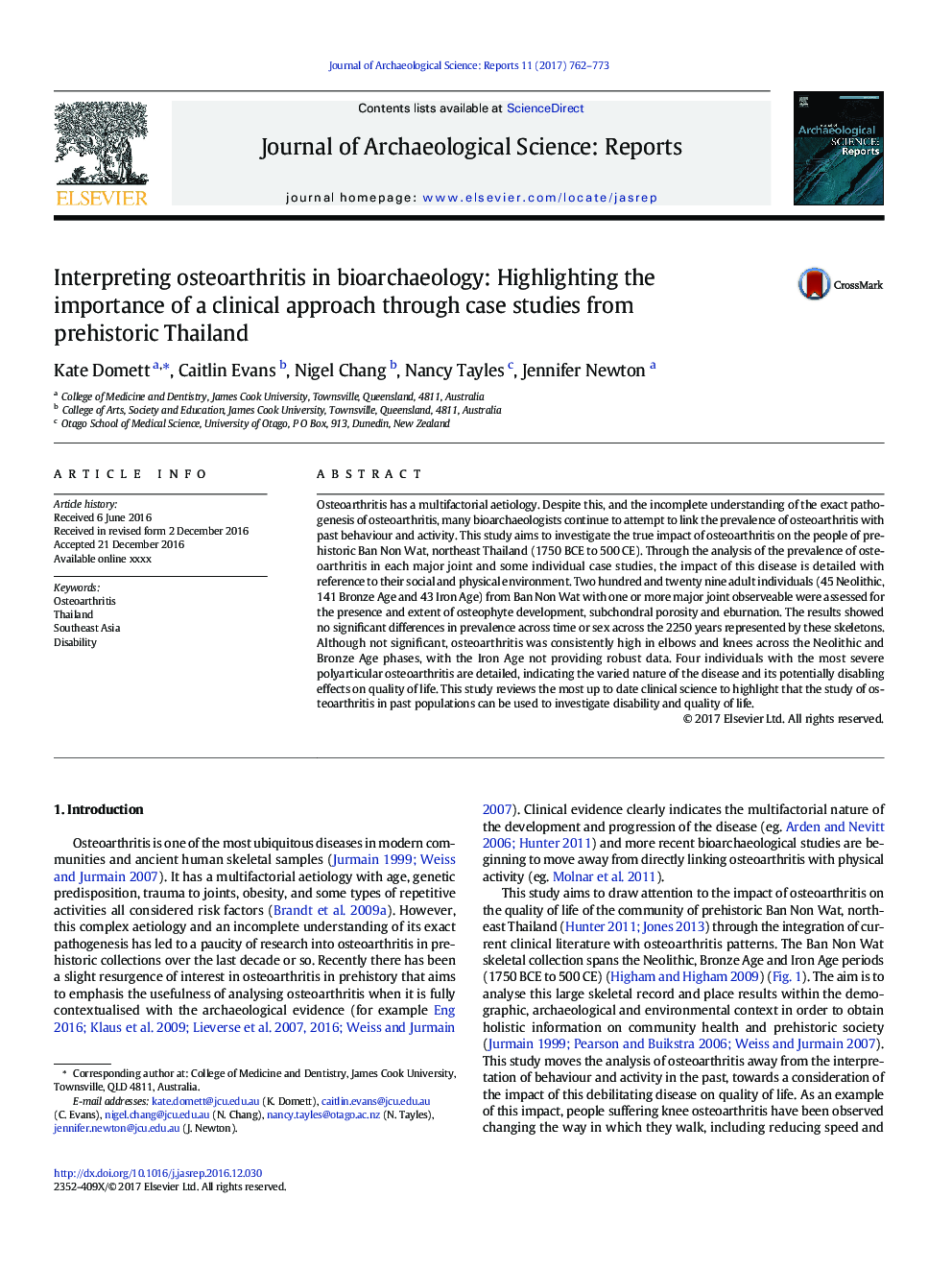| Article ID | Journal | Published Year | Pages | File Type |
|---|---|---|---|---|
| 5112602 | Journal of Archaeological Science: Reports | 2017 | 12 Pages |
Abstract
Osteoarthritis has a multifactorial aetiology. Despite this, and the incomplete understanding of the exact pathogenesis of osteoarthritis, many bioarchaeologists continue to attempt to link the prevalence of osteoarthritis with past behaviour and activity. This study aims to investigate the true impact of osteoarthritis on the people of prehistoric Ban Non Wat, northeast Thailand (1750Â BCE to 500Â CE). Through the analysis of the prevalence of osteoarthritis in each major joint and some individual case studies, the impact of this disease is detailed with reference to their social and physical environment. Two hundred and twenty nine adult individuals (45 Neolithic, 141 Bronze Age and 43 Iron Age) from Ban Non Wat with one or more major joint observeable were assessed for the presence and extent of osteophyte development, subchondral porosity and eburnation. The results showed no significant differences in prevalence across time or sex across the 2250Â years represented by these skeletons. Although not significant, osteoarthritis was consistently high in elbows and knees across the Neolithic and Bronze Age phases, with the Iron Age not providing robust data. Four individuals with the most severe polyarticular osteoarthritis are detailed, indicating the varied nature of the disease and its potentially disabling effects on quality of life. This study reviews the most up to date clinical science to highlight that the study of osteoarthritis in past populations can be used to investigate disability and quality of life.
Related Topics
Social Sciences and Humanities
Arts and Humanities
History
Authors
Kate Domett, Caitlin Evans, Nigel Chang, Nancy Tayles, Jennifer Newton,
